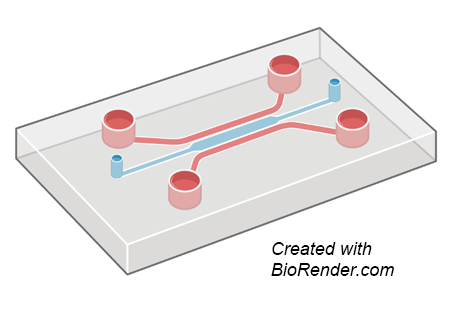About Alternative Methods
What are alternative methods and why is FDA advancing them for regulatory use?

On this page: What are alternative methods? | What are some examples of alternative methods? | Does FDA conduct research that supports alternative methods? | Does FDA’s regulatory framework permit the use of alternative methods?| Key terms
FDA has a long-standing commitment to reduce the need for animal testing. FDA is working to advance the development and use of alternative methods that may help achieve this goal, while recognizing that there are multiple steps to translate alternative methods into regulatory use while maintaining the same standard of safety, reduced toxicity, effectiveness, and quality of FDA-regulated products.
What are alternative methods?
An alternative method generally refers to a testing strategy that reduces or replaces the use of animal testing to support benefit-risk assessment for FDA-regulated products. Examples of traditional approaches include:
- General toxicology studies in animals to estimate the maximum recommended starting dose for first-in-human clinical trials
- Developmental and reproductive toxicology studies in animals to support human clinical trials and marketing of pharmaceuticals
- In vivo testing to assess how a medical device interacts with biological systems, including physiological, pathological, and toxicological effects in order to assess safety and/or effectiveness.
Animal studies can be critical to evaluating the potential for toxicity, safety and, at times, effectiveness, of FDA-regulated products. However, premarket animal-based assessments are time and resource intensive and may not always fully predict or detect potential concerns of FDA-regulated products for proposed uses in humans and animals. Alternative methods have the potential to provide both more timely and more predictive information to help accelerate product development, prevent products with increased toxicological risk from reaching the market, assess efficacy, provide insight into disease processes, and enhance emergency preparedness for the benefit of U.S. patients, consumers, and animals. Alternative methods have this potential while reducing the need for animal testing.
 What are some examples of alternative methods?
What are some examples of alternative methods?
Examples of alternative methods include promising advances in:
- Systems biology (evaluating multiple aspects of cell and tissue responses to study the whole organism)
- Engineered tissues (using scaffolds and cells to form biologically active tissues)
- Artificial Intelligence (using computer (aka in silico) approaches
- Alternative organisms such as Zebrafish and C. elegans
- Microphysiological systems (MPS), including organs-on-chips
 Does FDA conduct research that supports alternative methods?
Does FDA conduct research that supports alternative methods?
Yes. FDA conducts and supports regulatory science—the science of developing new tools, standards, and approaches to assess the safety, effectiveness, quality, and performance of FDA-regulated products to advance the development and use of alternative methods. FDA’s scientific research programs involve FDA-regulated products such as human and animal drugs, biologics, medical devices, food, cosmetics, and tobacco products.
For example, FDA is conducting research evaluating various MPS. See our Alternative Methods Publications and Events page for more information.
 Does FDA’s regulatory framework permit the use of alternative methods?
Does FDA’s regulatory framework permit the use of alternative methods?
FDA’s current regulatory framework permits and encourages the use of new alternative methods to animal testing, as described in regulations and guidance. FDA supports alternative methods that are backed by science and produce scientifically valid data that are appropriately within a context of use to meet the regulatory need. As FDA and the scientific community continue to implement the 3Rs (replacement, reduction, and refinement of animals used in research, testing, and teaching; see table of key terms), it is important to recognize that considerably more research and development is needed for tools that might replace, reduce, or refine the large battery of animal studies that support a multitude of toxicity, safety, and effectiveness assessments. In the near term, the current state of the science related to alternative methods may provide tools that complement traditional methods and, in some cases, possibly eliminate specific tests.
 Key terms
Key terms
Terms important to alternative methods, and what they mean in the context of alternative methods. This list is intended as an aid to help readers understand alternative methods and is not intended as FDA guidance.
| Term | Definition |
|---|---|
| Artificial Intelligence | Broadly defined as the science and engineering of making intelligent machines, especially intelligent computer programs (McCarthy, 2007). Artificial intelligence can use different techniques, including models based on statistical analysis of data, expert systems that primarily rely on if-then statements, and machine learning. |
| Context of use | The manner and purpose of use for an alternative method; the specific role and scope of an alternative method to address the question of interest. When FDA qualifies an alternative method, it is qualified for a specific context of use. |
| ex vivo (outside of the body) | Refers to experiments done in tissues from an organism in an external environment (outside the living body) with minimal alteration of natural conditions. An example is perfusing an intact liver in the lab to determine how a chemical is processed |
| in silico (aka computational) | An expression used to mean “performed on computer or via computer simulation.” |
| in vitro | Refers to the technique of performing a given procedure in a controlled environment outside of a living organism. This usually involves studying isolated cells by themselves or in concert with others |
| In vivo | Refers to experimentation using a whole, living organism. |
| Machine Learning | An artificial intelligence technique that can be used to design and train software algorithms to learn from and act on data. Software developers can use machine learning to create an algorithm that is ‘locked’ so that its function does not change, or ‘adaptive’ so its behavior can change over time based on new data. |
| Microphysiological system (MPS) | A microphysiological system uses microscale cell culture platform for in vitro modeling of functional features of a specific tissue or organ of human or animal origin by exposing cells to a microenvironment that mimics the physiological aspects important for their function or pathophysiological condition. MPS design may aim to provide and support cultured cells with physical (e.g., temperature, pH, and oxygen)/ biochemical/ electrical/ mechanical (e.g., flow or stretch)/structural/morphological conditions and recapitulate a set of specific properties that define a healthy or diseased organ or tissue function. MPS platforms may comprise mono-cultures, co-cultures of multiple cell types, maintenance of explants derived from tissues/organs, and/or inclusion of organoid cell formations. |
| Alternative method | An alternative method generally refers to a testing strategy that reduces or replaces the use of animal testing to support benefit-risk assessment for FDA-regulated products ; also called new approach methodologies. |
| Organs-on-chips | Organs-on-chips are a type of microphysiological systems. Each organ chip consists of a miniaturized physiological environment engineered to yield and/or analyze functional tissue units capable of modeling specified/ targeted organ-level responses (e.g., lungs). |
| Qualification | A process that allows for an alternative method to be endorsed by FDA in advance for a specific context of use. Qualification is a conclusion that within the stated context of use, an alternative method can be relied upon to have a specific interpretation and application in regulatory review. |
| 3Rs | Replacement, reduction, and refinement of animals used in research, testing, and teaching; additional information can be found on the U.S. Department of Agriculture (USDA) webpage for Animal Use Alternatives (3Rs) and the National Institute of Health (NIH) webpage for Alternatives to Animal Testing. |

